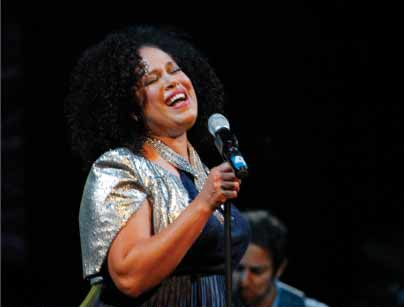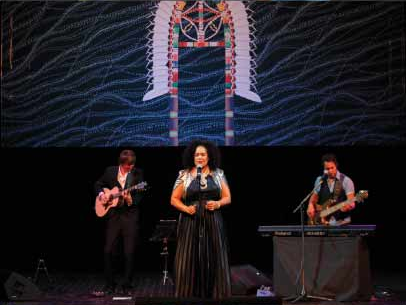It’s not everyday one gets the chance to see their childhood idol perform, especially not on Australia Day in a foreign city. In fact, if my ten-year-old self had been asked if she ever thought she’d see Christine Anu, her favourite singer – OK, co-favourite with the Spice Girls – perform at the Hanoi Opera House on Australia Day, she probably would have rolled her eyes and told you to get a life.
But to my great surprise, this actually took place a few months back. Usually, 26 January is not a day I pay a lot of attention to, especially now that I no longer get the day off and can’t listen to Triple J’s hottest 100, but this year was different.
Born in far north Queensland to a Torres Strait Islander family, Anu is one of Australia’s most identifiable pop singers and prominent Indigenous musicians. Internationally, however, she is relatively unknown. So when she got up on stage in front of a theatre filled with people from around the world, I wondered how they would react. I wasn’t so certain that the audience, largely made up of middle-aged Vietnamese men, would share the same musical tastes as a rural Australian preteen girl.
The performance was a testament to the power of music and its ability to connect people. Not only did Anu manage to get the audience to sing with her, but throughout the show I frequently saw those middle-aged men perched eagerly on the edge of their seats, grinning and clapping in time with the music.
All of this got me thinking about the universality of music and how enriching it is to celebrate diversity and strengthen connections between countries through arts and culture.
Cultural centres around Hanoi embrace the arts as a way to share a part of their home country with their Vietnamese hosts. But for those of us who are neither Vietnamese nor the nationality of the cultural centre, it is equally interesting. Currently, the Korean Cultural Institute is showing an art exhibition by a Vietnam-based Korean artist and L’Espace is holding its usual array of French films, art exhibits and music concerts. Last week, I visited the Goethe Institute for an exhibition of exquisite ao dais that have been lovingly preserved by a Vietnamese-German woman. In the first few months of the year, the Japan Foundation is staging a performance of Vietnamese and Japanese operas, as well as hosting a traditional Japanese drum troupe.
One of the joys of living in a foreign country is that I find I actually attend these events. At home I am less likely to visit a cultural centre, not because I’m not interested but because I get stuck in a routine. Here in Hanoi, I am constantly seeking activities that give me insight into Vietnam. Through these events I not only enjoy myself but learn more about both the host country and its cultural collaboration with Vietnam.
Music evokes emotions and, in many cases, the same music can evoke similar emotions across a wide audience, regardless of age and background. So when Anu strutted around the stage clapping her hands and singing “Why don’t you come join my party, let’s move until the break of dawn”, it wasn’t just me who was enjoying it. Although I was probably the only one who knew all the words, everyone appeared to find her fun and entertaining. And in that moment, we were all connected in our enjoyment.
This article originally appeared on the AsiaLife website on March 7th 2015, click here to see the original.



